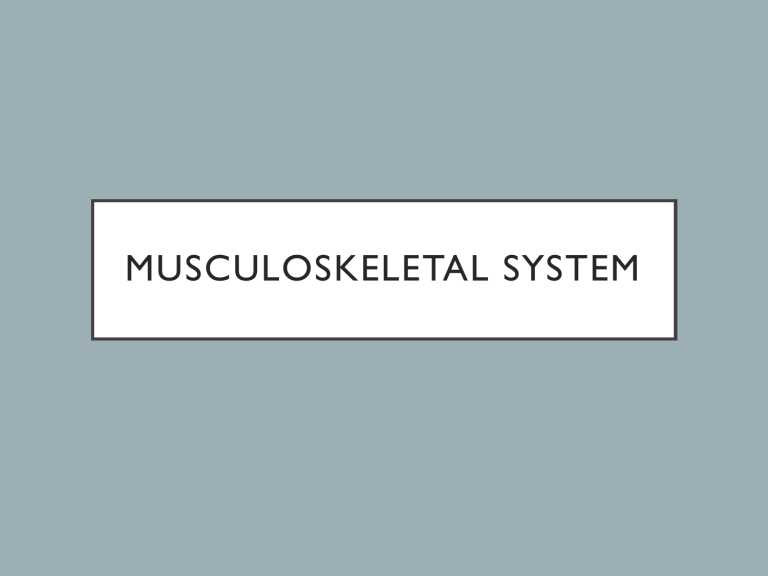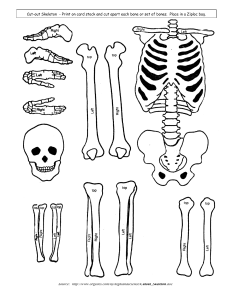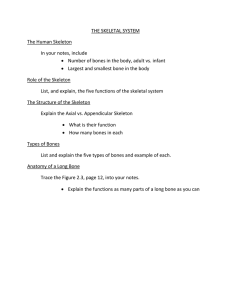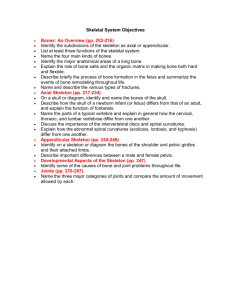
MUSCULOSKELETAL SYSTEM THE SKELETON Your skeleton is your body’s frame, which has three main functions: 1. Support for your soft tissues – without a skeleton, your skin and organs would collapse like a jellyfish 2. Protection for your organs – This is the main role of your axial skeleton (skull, vertebral column, ribs) 3. Allow movement – This is the main role of your appendicular skeleton (shoulders, arms, legs) THINK… WHAT ARE EACH OF THE STRUCTURES IN YOUR AXIAL SKELETON PROTECTING? BONES • Bones need to be strong so they do not snap or crumble • Compression squashes bones, tension stretches them • Bones must be slightly elastic, so they can flex/twist a little and then return to their original shape BONE STRUCTURE • Compact bone – the outer layer of bone, is dense and heavy, and gives the bone strength • Spongy bone – is light, and looks like honeycomb, filled with bone marrow where red blood are made Types of Joints 1. Fixed joint Allows little movement: Ex. joints of the bones in your skull 2. Pivot Joint One bone rotates around another bone: Ex. turning your head; rotating your wrist © 2014 Getting Nerdy, LLC 3. Ball-and-socket joint The ball end of one bone fits into a cuplike cavity on another bone. Ex: Shoulder or hip joint 4. Hinge joint Back and forth Ex: knee or elbow joint © 2014 Getting Nerdy, LLC 5. Sliding joint One part of a bone slides over another bone. Ex: Bones of wrist or ankle © 2014 Getting Nerdy, LLC MUSCLE: an organ that can relax and contract, which moves your body. There are two types: Voluntary muscles: muscles you can control (bicep) Involuntary muscles: muscles you cannot control (heart) © 2014 Getting Nerdy, LLC




